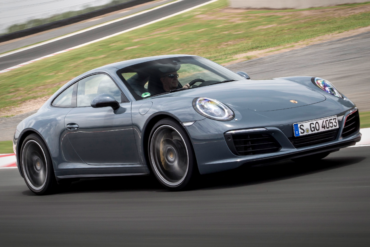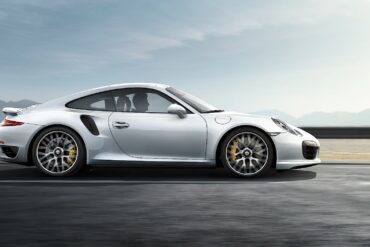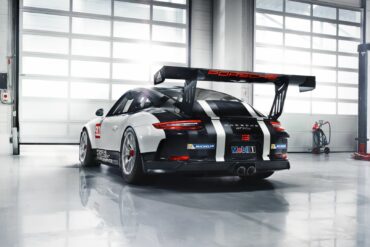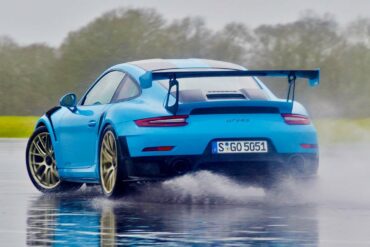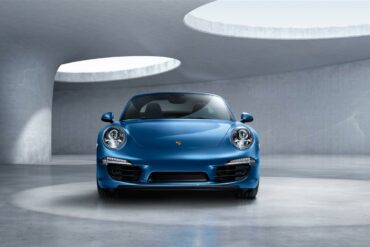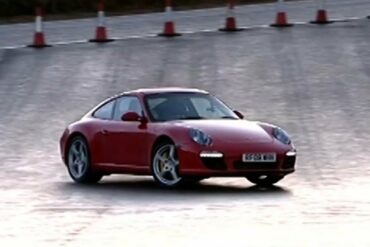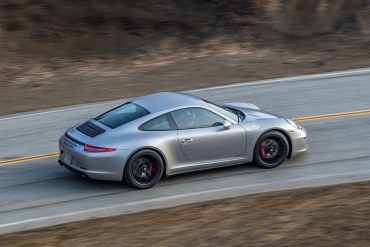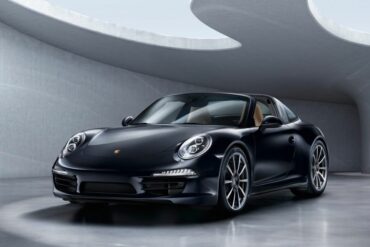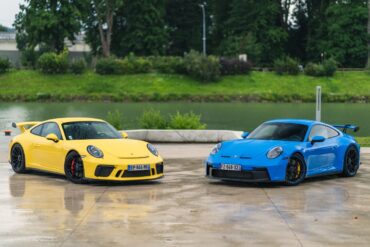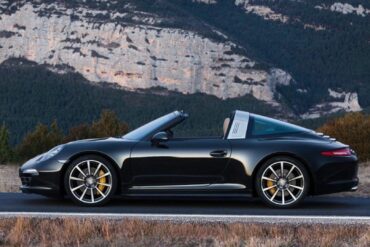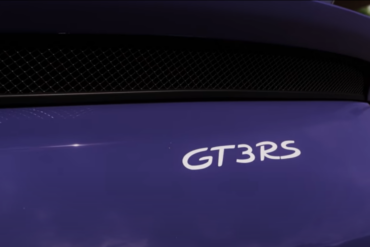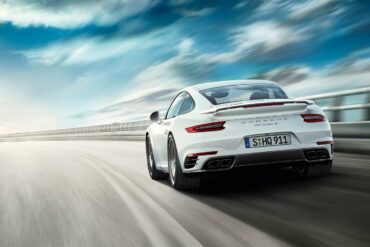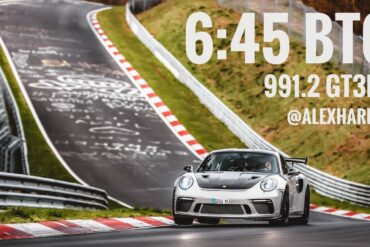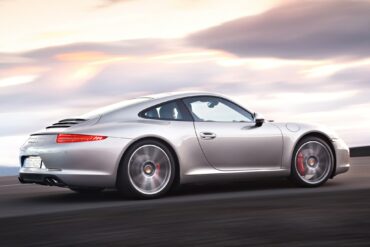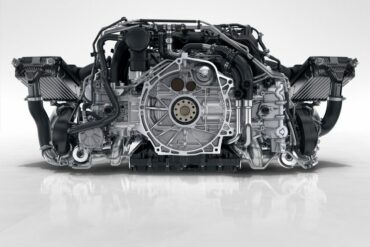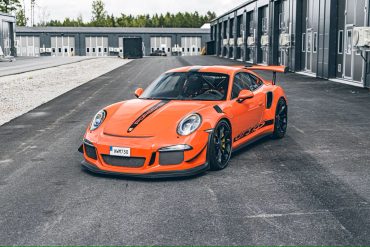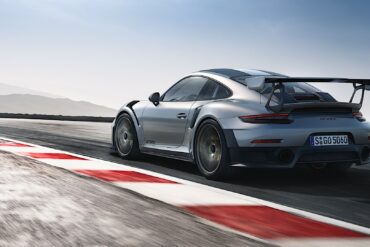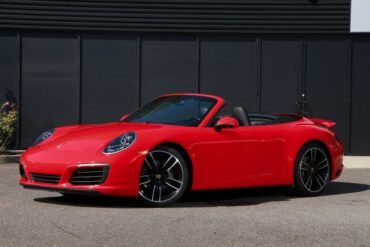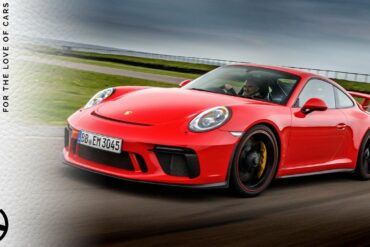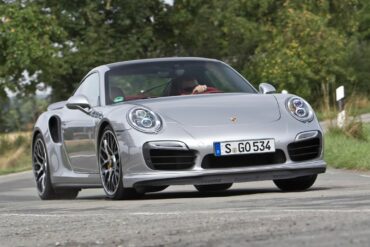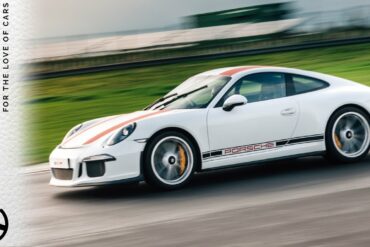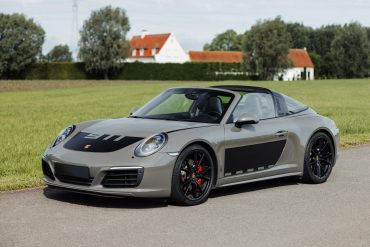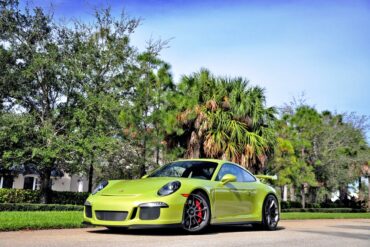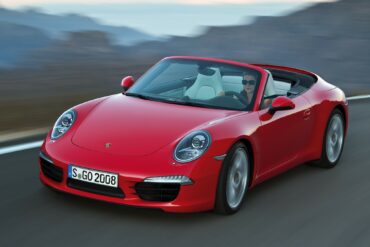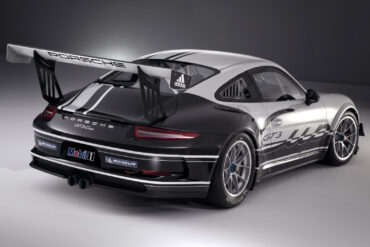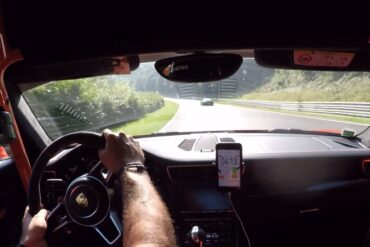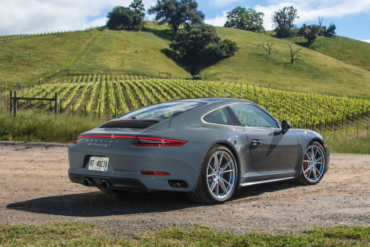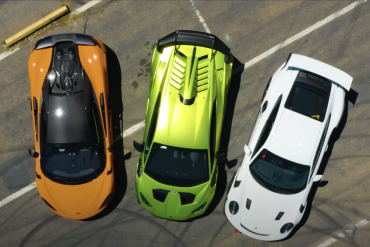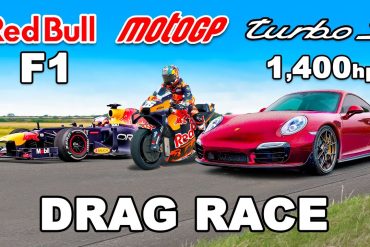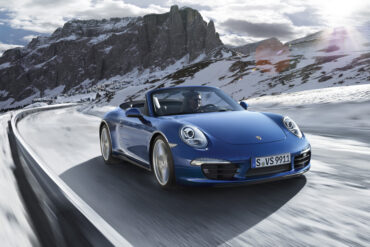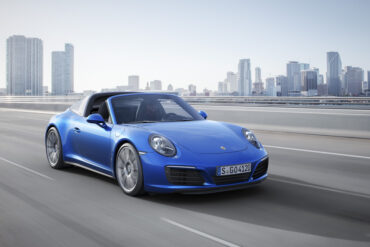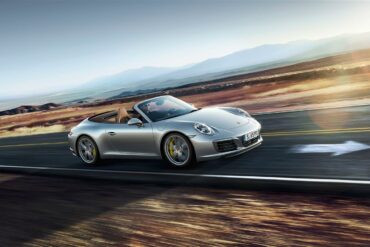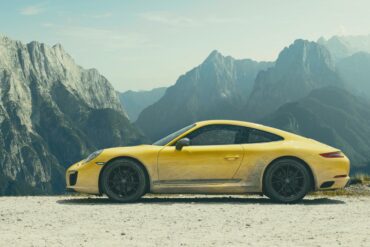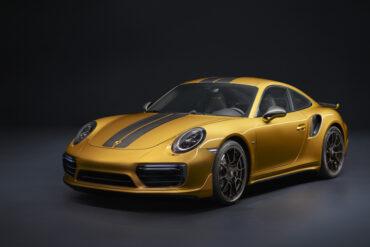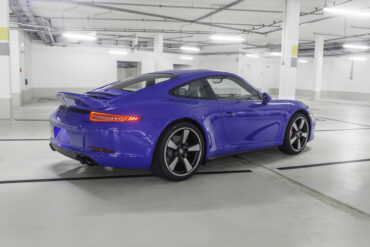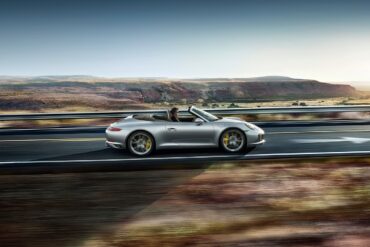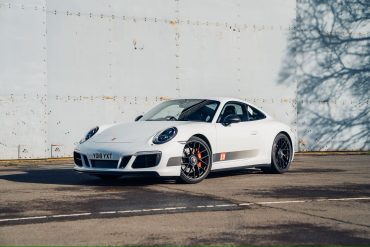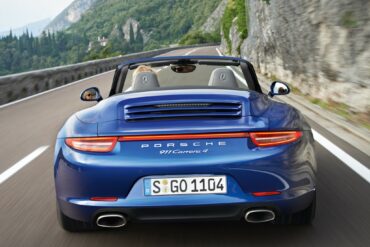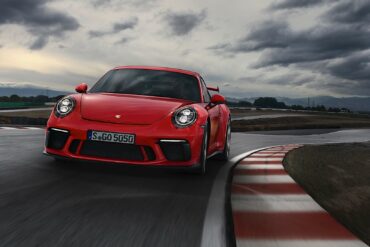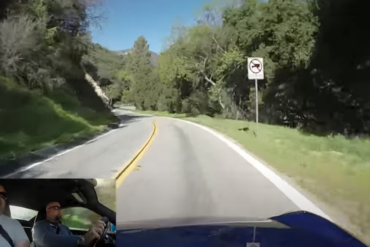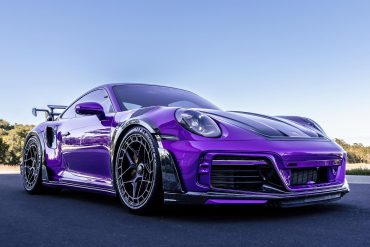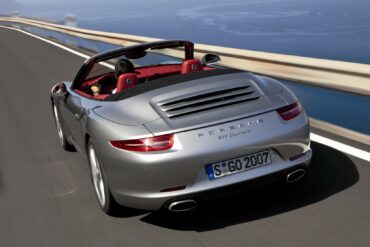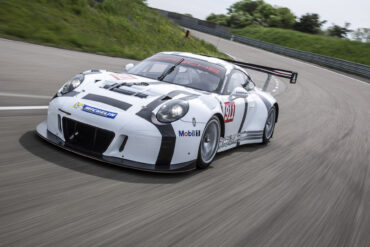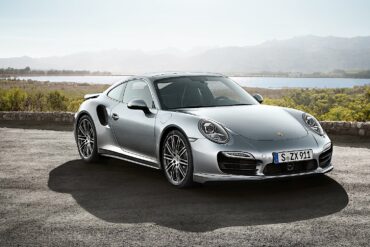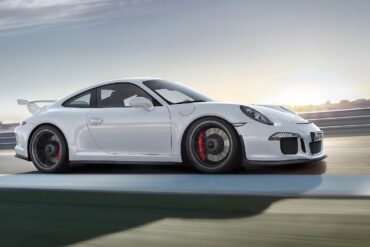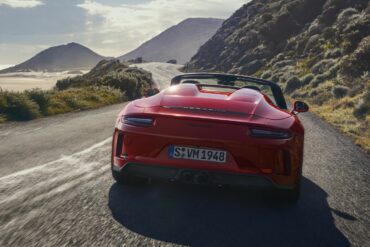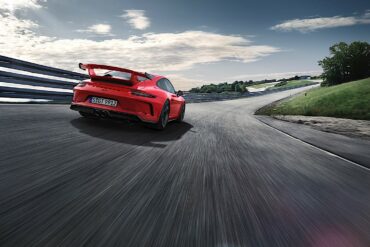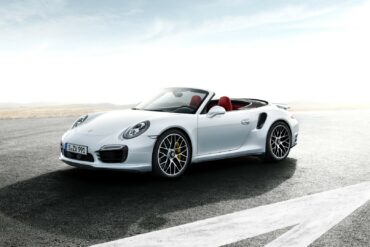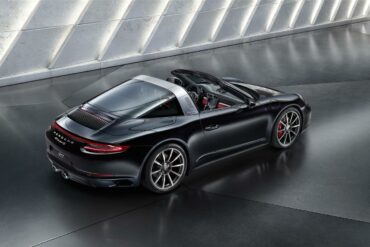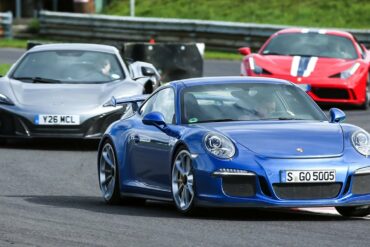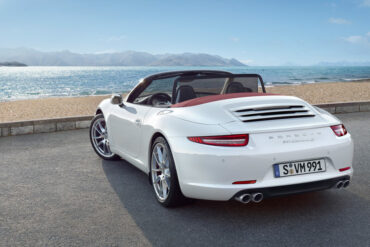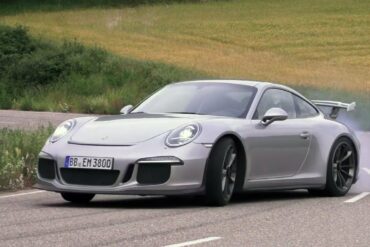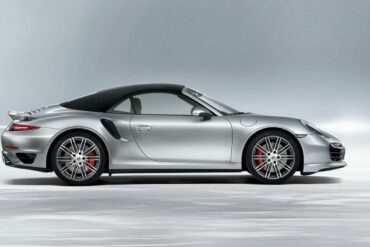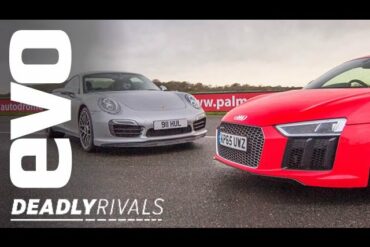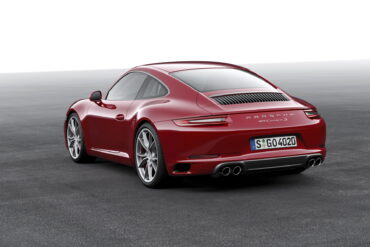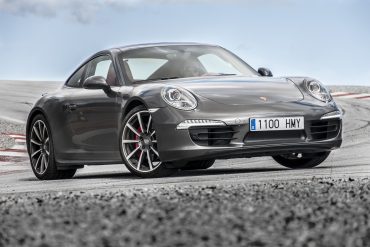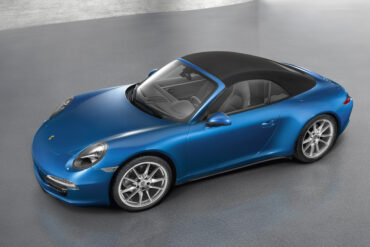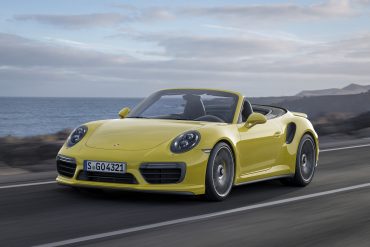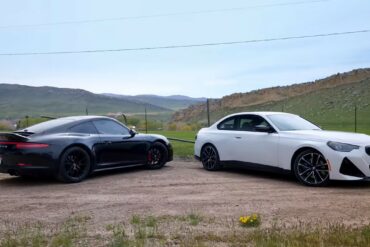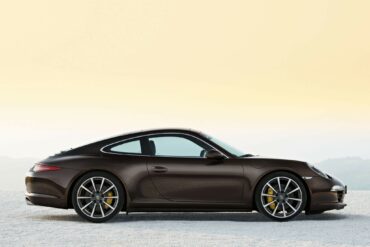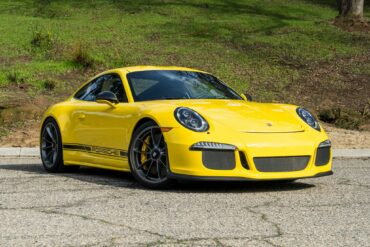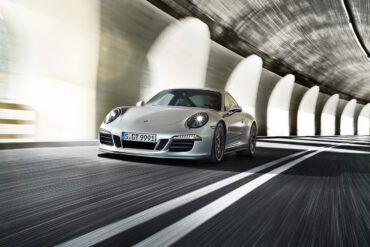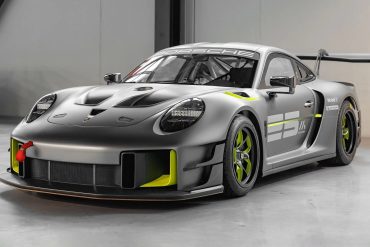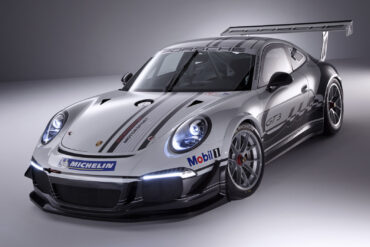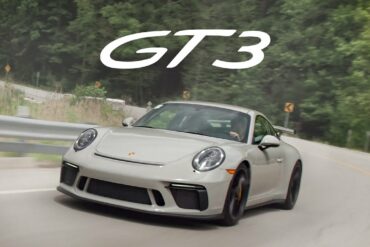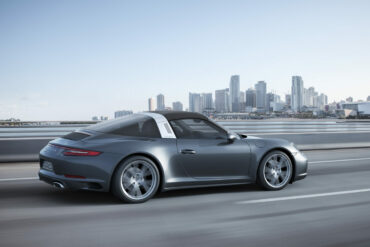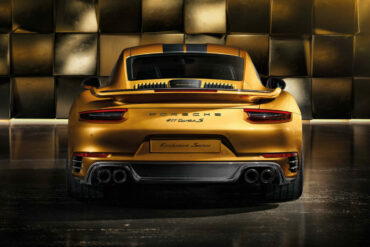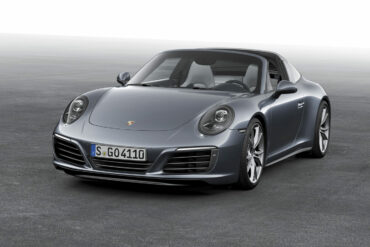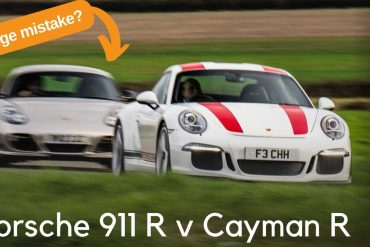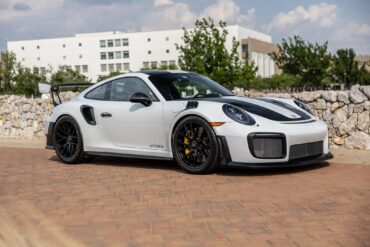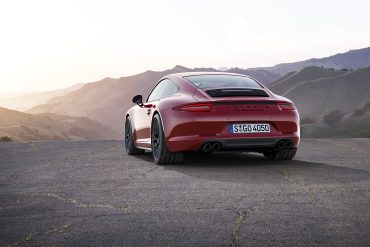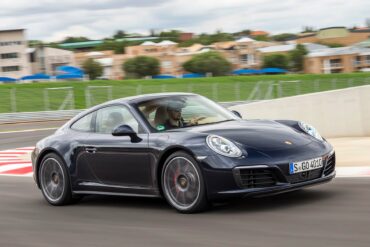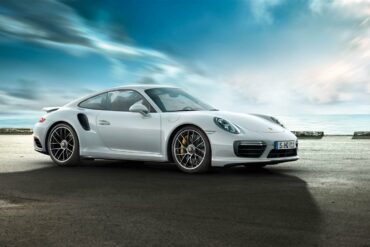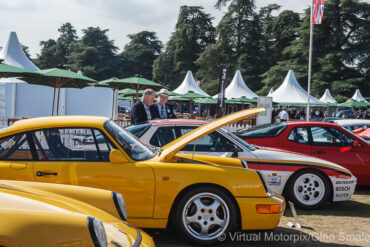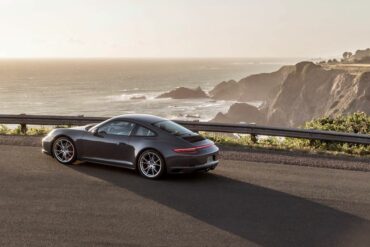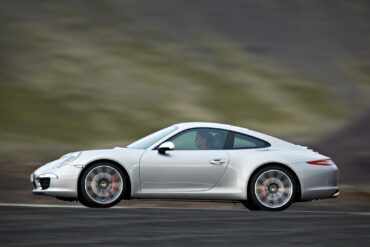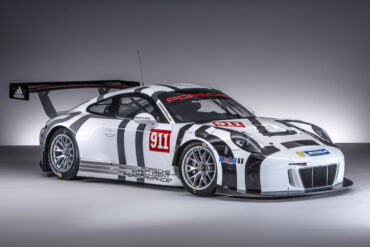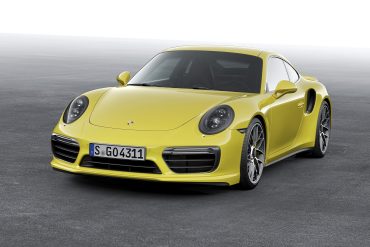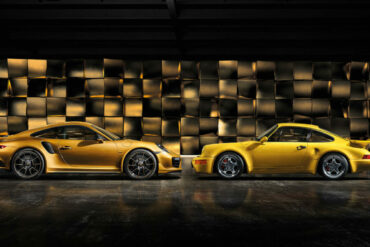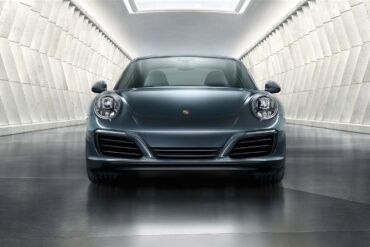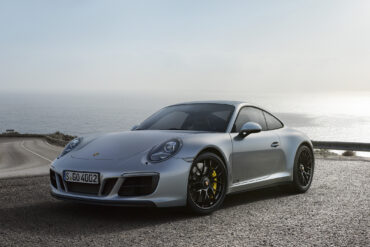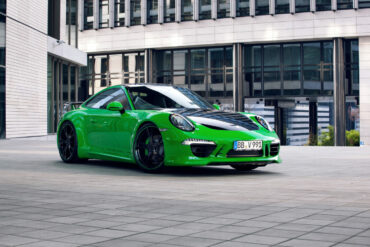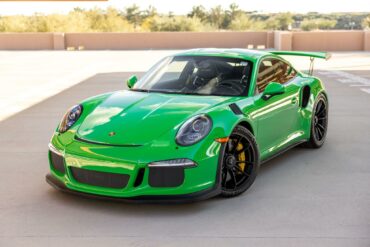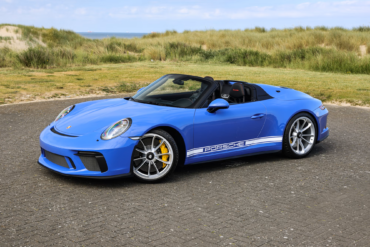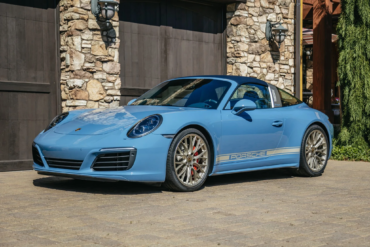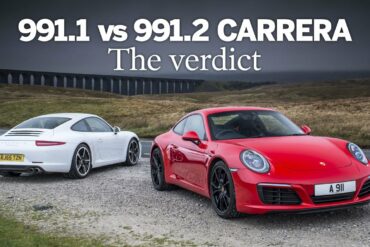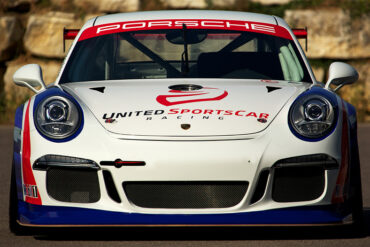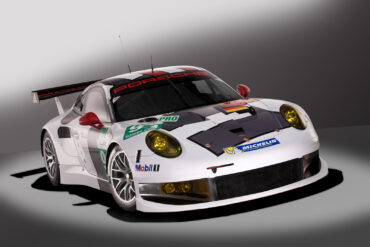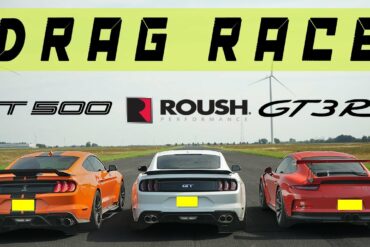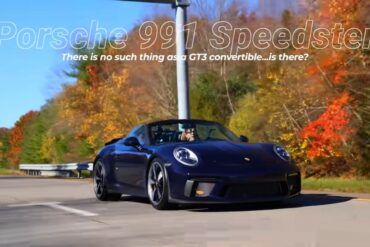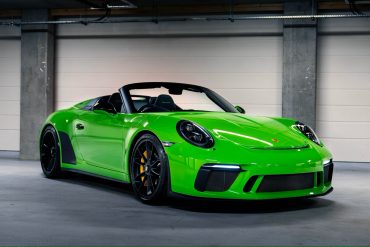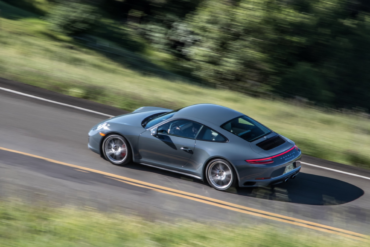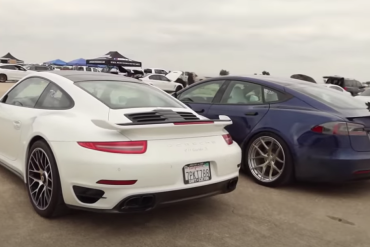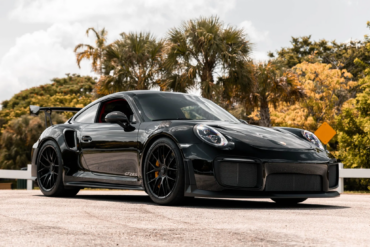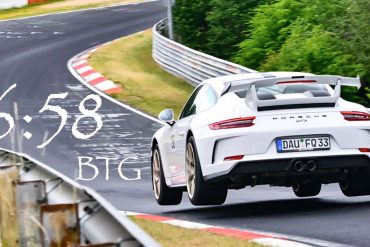2018 Porsche 911 Carrera 4 Coupe (991.2) Technical Specifications Engine layout Rear Engine Engine type Boxer, twin-turbo Cylinders 6 Valves per...
2014 – 2016 Porsche 911 Turbo S (991) Pictures & Gallery ...
(2016-2020) Porsche 911 GT3 Cup (991.2) Technical Specifications Concept Single-seater production-based race car Base model: 911 GT3 Engine Aluminium six-cylinder...
Porsche 991 GT3 RS on road and track Looks like a 911, drives like a hypercar? The Porsche 911 GT2...
2014 Porsche 911 Targa 4 (991) Technical Specifications Engine layout Rear engine Engine type 6-cylinder boxer engine Cylinders 6 Valves per...
Tiff’s Quick Take On The Porsche 911 Carrera S Throwback Thursday clip from series 15 of Tiff reviewing the 991...
Porsche 911 (991) Technical Specs & Performance Porsche 911 (991) Production Car Specs Weight here is DIN weight = car...
2015 Porsche 911 Targa 4S (991) Technical Specifications Engine layout Rear engine Engine type 6-cylinder boxer engine Cylinders 6 Valves per...
Porsche 911 GT3 Buyer’s Guide (991 & 992) Over the past 2 decades, the Porsche 911 GT3 models—and their variants,...
2014 Porsche 911 Targa 4S (991) Technical Specifications Engine layout Rear engine Engine type 6-cylinder boxer engine Cylinders 6 Valves per...
991.1 Porsche 911 GT3 RS Review Evo’s Henry Catchpole delivers his first impressions on the incredible new 991.1 Porsche 911...
2018 Porsche 911 Turbo S (991.2) Technical Specifications Engine Engine layout Rear Engine Engine type Boxer, twin-turbo Cylinders 6 Valves per...
Watch as a 991.2 Porsche 911 GT3 RS (driven by Alex Hardt) completes a full lap around Nordschleife of the...
2012 Porsche 911 Carrera S Coupe (991) Technical Specifications Engine Type Flat 6 Induction Normally-aspirated Cooling Water-cooled Valvetrain Four overhead camshafts,...
Porsche 911 (991) Engine Codes There are more versions of the 991 Carrera than you can shake a stick at!...
The 2015 Porsche 911 GT3 RS once again blurs the boundary between road-going sports cars and race cars. It is...
2018 Porsche 911 GT2 RS (991.2) Technical Specifications Body type Coupe Seats 2 Doors 2 Powertrain Architecture Internal Combustion engine...
2019 Porsche 911 Carrera 4 Cabriolet (991.2) Technical Specifications Engine layout Rear Engine Engine type Boxer, twin-turbo Cylinders 6 Valves per...
2018 Porsche 911 GT3 Track Review Porsche have listened to their customers and added all the lessons they’ve learned recently...
991 Porsche 911 Turbo S Road Review The 552bhp 991 Porsche 911 Turbo S is supremely fast, but does that...
991 Porsche 911 R Review The Porsche 911 R is more than its figures, much, much more than that. Carfection...
The Targa 4S Exclusive Alex Edition, available exclusively in the Netherlands, is a collaborative project between Studio Piet Boon, a...
Porsche introduced the 991 GT3 for the 2014 model year, as follow up to the multiple 997 GT3 variants. The...
Head to Head Mercedes-AMG GT C vs Porsche 911 Carrera T For the road, the GT C is the best...
The open-top 991 Carrera S Cabriolet requires an $11,600 premium over a comparable coupe; ta not-cheap $108,950 price point for those shopping. For that, you get the best overall open-top sports car around. With the 400-hp, 3.8-liter six and the benefit of the PDK automatic’s launch control, the Carrera S cabriolet should hit 60 mph in 3.8 seconds and cover the quarter-mile in the low 12s. Performance is on-par with the coupe on backroads so any fears that this is a soft-911 are thrown out the window. This is a serious sports car, sans roof.
(2013-2016) Porsche 911 GT3 Cup (991.2) Technical Specifications Type Racing Car Built At Stuttgart, Germany Engine Flat-6 Position Rear, Longitudinal...
Quick race on a half Nurburgring lap, the Mercedes-AMG GTR was on the rear from the beginning and Porsche 991...
2019 Porsche 911 Carrera 4S (991.2) Technical Specifications Engine layout Rear Engine Engine type Boxer, twin-turbo Cylinders 6 Valves per cylinder...
2016 – 2019 Porsche 911 Carrera 4 Cabriolet (991.2) Pictures & Gallery...
McLaren 600LT vs Lamborghini Huracan STO vs Porsche GT3 RS This is actually a pretty fair comparison video. For those...
A stock Porsche 911 Turbo S, particularly from the 991-generation, is already an impressive vehicle. With a 560-horsepower 3.8L twin-turbo...
2013 Porsche 911 Carrera 4 Cabriolet (991) Technical Specifications Engine Type Flat 6 Induction Normally-aspirated Cooling Water-cooled Valvetrain Four overhead camshafts,...
The 991.2 911 Targa 4S is powered by the latest water-cooled 3.0-liter twin-turbocharged flat-six from Porsche, producing 420 hp and 368 lb-ft of torque. It can be optioned with a PDK seven-speed dual-clutch automatic (a seven-speed manual is standard) and all-wheel drive is standard. Whereas the two earlier generations of Targas were little more than 911 Carreras with large glass sunroofs, the 991-series Targa nailed the look and feel of the original.
2017 Porsche 911 Carrera S Cabriolet (991.2) Technical Specifications Engine Engine layout Rear Engine Engine type Boxer, twin-turbo Cylinders 6 Valves...
To the untrained eye, the Carrera T may appear to be a bare-bones and sparingly equipped 911 at first glance. The purpose of the T is to create a driver-focused 911, equipped with only the necessities required to appeal to those of a purist’s ilk. The Carrera T employs the same power plant used in the current base Carrera - a twin-turbocharged 3.0L flat-six with 370 horsepower and 331 lb-ft of torque. A 7-speed manual transmission comes standard with the T, along with a shorter final-drive ratio and the limited-slip differential. Porsche Sport Exhaust (PSE) is also standard. PASM sport suspension comes standard in the T, which lowers the chassis by 0.4 inches relative to the base Carrera and allows for two modes of dampening.
Introduced in June 2017, the new 911 Turbo S Exclusive Series is the most powerful all-wheel drive turbocharged member of...
2016 Porsche 911 Carrera GTS Club Coupe Pictures & Gallery ...
The Porsche 911 GT3 Touring Is Perfect Does it get much better than this for a supercar that offers so...
2016 Porsche 911 Carrera S Cabriolet (991.2) Technical Specifications Engine Engine layout Rear Engine Engine type Boxer, twin-turbo Cylinders 6 Valves...
Porsche is the most successful marque in the 24 Hours of Le Mans, with an unrivalled 19 wins in the...
2015 Porsche 911 Carrera 4 Cabriolet (991) Technical Specifications Engine Type Flat 6 Induction Normally-aspirated Cooling Water-cooled Valvetrain Four overhead camshafts,...
2018 – 2019 Porsche 911 GT3 (991.2) Pictures & Gallery ...
Matt Farah Reviews the 991.1 GT3 The latest generation of GT3, the 991. Matt reviews a 2015 Porsche 991 GT3...
The GTstreet R, limited to just 87 units, represents the ultimate version of the 991 Turbo and Turbo S. TECHART’s...
2012 – 2015 Porsche 911 Carrera Cabriolet Pictures & Gallery...
Based on the 911 GT3 RS production sports car, Porsche has designed a customer sport race car for GT3 series around the world: The 911 GT3 R. In developing the more than 368 kW (500 hp) racing nine-eleven, special attention was paid to lightweight design, better aerodynamic efficiency, reducing consumption, improved handling and optimised safety. The 911 GT3 R features the distinctive double-bubble roof, and the wheelbase which had been lengthened compared to the prior generation.
The 2014 Porsche 911 Turbo is a technological extravaganza. Adaptive aerodynamics, four-wheel steering, torque vectoring, active four-wheel drive, adaptive dampers, launch control, twin-clutch automatic gearbox – you get the picture. This is the first time we've had a chance to sample all of this on British roads. Two versions are available; both are powered by an uprated version of the previous 911 Turbo's 3.8-litre twin-turbo flat-six engine. The new 911 Turbo has even more power and more electronic systems. It is still a straight-line monster that will blow you away in terms of the sheer might of that engine and traction.
2014 – 2016 Porsche 911 GT3 (991) Pictures & Gallery ...
2019 Porsche 911 Speedster (991) Pictures & Gallery ...
2019 Porsche 911 GT3 (991.2) Technical Specifications Engine Engine Type Aluminium horizontally opposed and naturally aspirated engine Cylinders 6 Displacement 3,996...
2014 – 2016 Porsche 911 Turbo S Cabriolet (991) Pictures & Gallery ...
2016 Porsche 911 Targa 4S (991.2) Technical Specifications Engine Engine layout Rear Engine Engine type Boxer, twin-turbo Cylinders 6 Valves per...
Ultimate Driver’s Car Showdown Ferrari’s brilliant 458 Speciale takes on McLaren’s potent 650S and the well-proven 991 Porsche 911 GT3....
2015 Porsche 911 Carrera S Cabriolet (991) Technical Specifications Engine Type Flat 6 Induction Normally-aspirated Cooling Water-cooled Valvetrain Four overhead camshafts,...
2019 Porsche 911 Speedster (991.2) Technical Specifications Engine Naturally aspirated flat-six (boxer) engine No of cylinders 6 Valves/cylinders 4 Displacement 3,996...
Chris Harris Spanks the New 991 GT3 If we were a car magazine we’d call this a WORLD EXCLUSIVE, but...
2014 Porsche 911 Turbo Cabriolet (991) Technical Specifications Engine layout Rear Engine Engine type Twin Turbo Boxer w/ VTG Cylinders 6...
Real Rivals. Which Is Better? We test the brand new 2015 Audi R8 V10 Plus against the 991 Porsche 911...
Porsche Option Codes – Porsche 911 (2016 Model Year) Looking to decode your 2016 Porsche 911 option codes? Want to...
Porsche Option Codes – Porsche 911 (2013 Model Year) Looking to decode your 2013 Porsche 911 option codes? Want to...
2014 Porsche 911 Carrera 4 Cabriolet (991) Technical Specifications Engine Type Flat 6 Induction Normally-aspirated Cooling Water-cooled Valvetrain Four overhead camshafts,...
This is the fastest convertible GT you can buy. The Turbo S cab gets 572 bhp (39 hp more than the base turbo cab) and 553 ft lbs (9 ft lbs more than the regular cab) of torque. With the Turbo S, the PDCC Porsche Dynamic Chassis Control hydraulic roll bars came as standard. The PCCB Porsche Ceramic Composite Brakes had been standard on the Turbo S already since the 996 generation. New options included the radar-based lane change assist and a lift system for the front axle (increased ground clearance by 1.6″/40 mm). The PCM now had a multi-touch screen like in the facelifted 991 Carrera.
Everyday Driver compares and contrasts the Porsche 911 Carrera 4S and the BMW M240i. Guess which car comes out on...
2015 Porsche 911 Carrera 4S (991) Technical Specifications Engine Type Flat 6 Induction Normally-aspirated Cooling Water-cooled Valvetrain Four overhead camshafts, four...
PCarMarket is now offering a striking and low mileage example of a 2016 Porsche 911 R. The car is also...
With all-wheel drive and all the GTS goodies, the Carrera 4 GTS sits in a very practical place in the Porsche 911 lineup. The 4 GTS is a Carrera 4S with all the items Porsche thinks you should have at a price that is less than choosing them yourself. Standard equipment on the GTS that is normally optional on the Carrera S includes the Sport Chrono Package, Sport Exhaust, bi-xenon lights with PDLS (Porsche Dynamic Lighting System) and PASM (Porsche Active Suspension Management). Inside, four-way adjustable sport seats are standard.
For all track enthusiasts out there, you might want to check out this year’s Monterey Car Week where a compelling...
The new Porsche 911 GT3 Cup is powered by a 3.8-litre six-cylinder flat engine. It generates 460 hp (338 kW) at 7,500 revs, surpassing the predecessor by 10 hp. A six-speed dog-type gearbox developed by Porsche Motorsport which is operated via shift paddles at the steering wheel for the first time in a Porsche brand trophy race car transmits the power to the rear axle. The single piece race wheels with centre mount were also new.
One of the BEST Sportscars Money Can Buy We go for a drive in the 2018 Porsche 911 GT3. Our...
2018 Porsche 911 Targa 4 (991.2) Technical Specifications Engine Engine layout Rear Engine Engine type Boxer, twin-turbo Cylinders 6 Valves per...
2018 Porsche 911 Turbo S Exclusive (991.2) Technical Specifications Engine Engine layout Rear Engine Engine type Boxer, twin-turbo Cylinders 6 Valves...
2017 Porsche 911 Targa 4 (991.2) Technical Specifications Engine Engine layout Rear Engine Engine type Boxer, twin-turbo Cylinders 6 Valves per...
The letter “R” might seem ordinary, but in the Porsche world, it signifies something much more. It’s a badge of...
The debut of the Porsche 911 GT2 RS took place during the 997 generation in 2010 and received exceptional acclaim....
2015 Porsche 911 Carrera GTS Coupe (991) Technical Specifications Engine layout Rear Engine Engine type Boxer-6 Cylinders 6 Valves per...
Thought it carries a similar design to the new 911, the Carrera 4 has its own unique features, the most obvious being an AWD system hooked up to its new turbocharged 3.0-liter flat-six engine. The C4 gets a spate of new goodies, including a unique taillight section, and an updated infotainment system that brings the sports car’s connectivity to a whole new level. Inside the new 911 Carrera 4, there are only a few changes, the most important is the new infotainment system. With 370 hp on tap from the direct-injection, twin-turbo flat-six and all-wheel drive putting all those ponies to the ground, the C4 is more than quick enough.
With the Turbo S, the PDCC Porsche Dynamic Chassis Control hydraulic roll bars came as standard. The PCCB Porsche Ceramic Composite Brakes had been standard on the Turbo S already since the 996 generation. New options included the radar-based lane change assist and a lift system for the front axle (increased ground clearance by 1.6″/40 mm). The PCM now had a multi-touch screen like in the facelifted 991 Carrera. Routes and places could be visualized with 360-degree images and satellite images. Engine gets more horsepower too, now with 572 bhp and 553 ft lbs of torque.
Salon Privé, Blenheim Palace, 1 September 2018: Concours Masters Celebration of 70 Years of Porsche I received the email inviting...
2016 Porsche 911 Carrera 4S (991.2) Technical Specifications Engine layout Rear Engine Engine type Boxer, twin-turbo Cylinders 6 Valves per cylinder...
2014 Porsche 911 Carrera S Coupe (991) Technical Specifications Engine Type Flat 6 Induction Normally-aspirated Cooling Water-cooled Valvetrain Four overhead camshafts,...
2016 – 2018 Porsche 911 GT3 R (991.1) Pictures & Gallery...
2017 – 2019 Porsche 911 Turbo S (991.2) Pictures & Gallery ...
2019 Porsche 911 Turbo S Exclusive (991.2) Technical Specifications Engine Engine layout Rear Engine Engine type Boxer, twin-turbo Cylinders 6 Valves...
2018 Porsche 911 Carrera Coupe (991.2) Technical Specifications Engine Engine layout Rear Engine Engine type Boxer, twin-turbo Cylinders 6 Valves per...
2017 – 2019 Porsche 911 Carrera 4 GTS (991.2) Pictures & Gallery...
2013 TechArt 911 Carrera 4 Coupé TECHART Automobildesign presents its individualization program for Porsche 911 Carrera 4 models. The valve-controlled...
The Porsche 991 GT3 RS is a track-focused variant that was unveiled at the 2015 Geneva Motor Show. It introduced...
The Porsche 991 Speedster is the beneficiary of Stuttgart’s latest fixings, while also serving as a throwback to the Porsche...
New vs Old 911 Turbo S Showdown It’s the one you Porsche fanboys have been waiting for – a Porsche...
This very rare 2017 Porsche 911 Targa 4S currently offered on Bring A Trailer is one of only 24 Exclusive...
Does the turbocharged 911 move the game on enough? After a mammoth road test in issue 137, Total 911 decide...
2014 Porsche 911 GT America (991) Technical Specifications price $ $269,000 engine Flat-6 position Rear, Longitudinal aspiration Natural ignition Coil-On-Plug...
As the rules do not permit higher output engines, the engine for the 991 RSR was taken from the 997 GT3 RSR 4.0 and the development work focused on the chassis, body, aerodynamics and the gearbox. A wishbone front suspension replaced the McPherson struts used in 997. A new development was the lightweight gearbox. One of the priorities in the development was the more evenly balanced weight distribution. The centre of gravity was lower, too.
Watch as the folks from Sam CarLegion YouTube channel pits a Ford Mustang GT500, a 2018 Ford Roush Mustang GT,...
Nick Murray delves into why the Porsche 991 Speedster is Porsche’s version of a cabriolet....
Celebrating their 70th anniversary, Porsche unveiled the Type 991.2 Speedster concept at the 2018 Paris Motor Show, marking a significant...
2016 – 2019 Porsche 911 Carrera 4S Coupe (991.2) Pictures & Gallery...
I know these drag races are kind of pointless to most of us, but I do think they are entertaining....
The 991-generation GT2 RS has been called as the pinnacle of the German automaker’s lineup of high-performance road cars. Only...
Automatic transmissions are now the standard option for cars. They are very efficient and convenient not just for everyday use...


